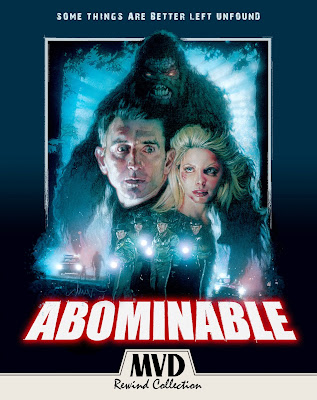Text © Richard Gary / Indie Horror Films,
2018
Images from the Internet
The Night of the Virgin (aka
La noche del virgen)
Directed
by Roberto San Sebastián
Cleopatra
Entertainment / MVD Visual
116
minutes, 2017
www.cleopatra-entertainment.com
This
is the kind of film you are not usually going to find coming out of the English
language zone. It’s beyond quirky, and has a sensibility and pacing all its
own. In Spanish with English subtitles, it all takes place in one New Year’s
Eve night into day, and certainly will not be a good memory for, well, any of
the participants.
 |
| Javier Bódalo |
Our
titular… well, okay, let’s say hero, Nico (Javier Bódalo) is a mousey lookin’ guy
who is a 20 year old virgin, and he’s no Steve Carell. He has the social skills
of Sheldon Cooper without the brains to match, and he’s at a rave party getting
drunk and on the prowl. Meanwhile his so-called friends have abandoned him and are
off somewhere in the room, insulting him via text, as they do throughout the
story; we never see them. This is where and when he meets Medea (Miriam Martin),
who is closer to the old Greek legend than a man dressed up like a raucous
grandmother.
Medea
takes a fancy to him, despite his maaaaaany shortcomings (and I’m taking about
personality, not physicality here), and takes him home. Thing is, she’s a bit
of a psycho in an apartment that’s a mess and filled with huge cockroaches that
she treats like the Hindi respect cows. She’s obsessed with a strange goddess
from Nepal, and he’s thinking with his dick, so you know it’s not going to end
well.
Enter
an angry boyfriend named Araña/Spider (Victor Amilibia) on the other side of
the front door trapping them inside and threatening to kill them both, and the
downward, furious and bloody night-into-day just keeps on getting stranger and
more painful for everyone involved.
Speaking
of which, for a small central cast of three (though there are numerous
momentary passersby), there is a lot of gore and especially a lot of body fluids
from nearly every possibly hole, including one you may not have thought of before.
 |
| Miriam Martin and the Nepal goddess |
Of course,
this is a genre film, so hopefully
what I’m going to say is hardly anything close to a spoiler alert, and I will not give away any key points, I promise.
You just know right from the onset that there is more to this Nepal religion
than just a weird vegan-like devotion
to an obscure goddess. It kind of makes sense in a twisted way, as some
traditional Spanish dresses (the kind worn behind hand-held fans) are a bit
similar in style to North Indian wedding regalia.
This
is considered a comedy, but it’s dry as solid carbon dioxide; yeah, there is a
definite chance to laugh more at what is happening than with the characters,
but it definitely does a bit to temper the action going on the screen to get
you to not overload until the next gross-out.
All
the actors do really well, especially the two leads. While Bódalo frequently tends
to act through his eyes and teeth, it actually works for this particular character
as he goes through varying waves of shock, fear and anger). Martin also does
well going back and forth between MILF, mother figure, and monstrous. The thing
is, not one character in the film is likeable, and yet – especially the leads –
manage to keep the viewer interested in what is happening to them despite lack
of any kind of real backstory, and that’s good acting.
For
such a tight space, the camera moves really well among the characters both emphasising
the narrow apartment and yet not making it claustrophobic until it’s meant to
do so. Other people pop up here and there, and are like water flowing past the
story as ersatz Greek Choruses, commenting on (or using a cell phone camera to
record) what they observe rather than taking any steps to do anything about it;
as I’m not familiar with Bilbao or Madrid culture, I don’t know if this is
device or comic or ironic social commentary.
As I
was saying, the camera work is quite sharp often focusing in on extreme close-ups
of faces via Sergio Leone style, quick zooms like Sam Raimi (few POV, though), or
micro-shots of whatever gross is occurring at the time. There tends to be a
tint towards the yellow, but it is also effective to be purposefully
off-putting, I am assuming.
The extras
are a couple of this films trailers, a bunch of other Cleopatra Entertainment
coming attractions (some reviewed on this blog), and a 2:14 slideshow which are
stills taken directly from the film.
My
only real complaint is that this could have certainly been trimmed by at least
20 minutes, as it overruns its story in nearly two hours. But it will probably
still keep your attention even as you occasionally wince at the actions, or
just stare at the screen and say, “What did I just see?!”
What
I really liked about it, despite its length, is that it doesn’t always take
either the easy or obvious route. You’re bound to see some of what happens
coming, but odds are there’s a trick or two up Sebastián’s cinematic sleeve, as
it were.
Certainly
I would call this body horror, but again, sometimes not in ways one would
expect; but like I said, it could still be considered quite squeamish for most
other than die-hard fans. But, isn’t that part of the beauty of the whole enchilada?

























